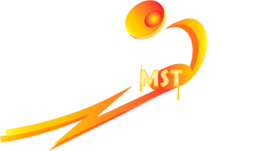If you are like me, I consult the weather channel app in order to select my practice days – most often looking for “Goldilock” conditions – not too hot, not too cold, not too wet – just right!

While this might be great for creature comfort, is it the best way you can prepare yourself for competition? When it comes to competition, you may not always have those perfect conditions. The lighting might be less than optimal. You might find yourself caught in a shower. It might be biting cold! The wind might be howling!
Are you prepared for whatever might be thrown your way? The brain really likes familiarity. It would prefer that you had practiced in the rain prior to having to do it in competition for the first time! How many of us have actually practiced in “sub-optimal” conditions on purpose?
Well, I can tell you I had just that opportunity not too long ago. I had scheduled a lesson well in advance of the day of the session. As the day of the lesson came closer, it was pretty clear that the forecast was not looking great! With my coach’s agreement, we decided to hold course and go ahead no matter what the conditions were. As it turns out, we did the lesson in a veritable monsoon!

Fortunately, there was no lightning (I would not suggest that anyone practice in unsafe conditions), but it was wet! Wetter conditions than I have ever shot in. I got to practice how to cope with the wet conditions for about 1.5 hours (after which the sun came out). This was invaluable practice. Now when I get caught in a storm during competition, I will be more comfortable performing under those conditions. I will be able to remind myself through the use of positive self-talk that I am cool with shooting in the rain.
I also learned quite a few things. First, keeping your glasses clear is huge! I had brought along a glasses case that sealed tightly. In that, I kept a lens cleaning cloth where it stayed dry and ready to use. I also kept two towels – one on my hip and one in my shell pouch that I was able to pull out and use to dry the grip areas of my gun at each station. I also prepared myself by bringing a change of clothes as well as towels to dry both myself and my equipment after the event. You may want to read over your list to make sure you are covered for adverse conditions as best as you can. I have written a couple of posts on the use of lists. If you haven’t checked them out – please feel free to peruse them HERE and HERE! Note, if you add gear to your list, you should practice shooting while using the gear in advance of using it in competition.
While it was not the best conditions to train in, I have to admit that I actually had fun trying it! I also feel like I am ready when this happens in competition! I have also supplemented my adverse conditions practice by using the sport psychology tool of visualization by picturing myself shooting in my mind under different conditions. This is a great application for this tool, but no substitute for practicing in the actual adverse conditions. If you wish to read more about using visualization, check out this post HERE.
So, next time you consider cancelling a practice session because “Goldilocks” is not happy, give a thought to going anyway to expand the conditions your brain is comfortable shooting in (even if your body tries to talk you out of it)! It will make you a better competitor!
